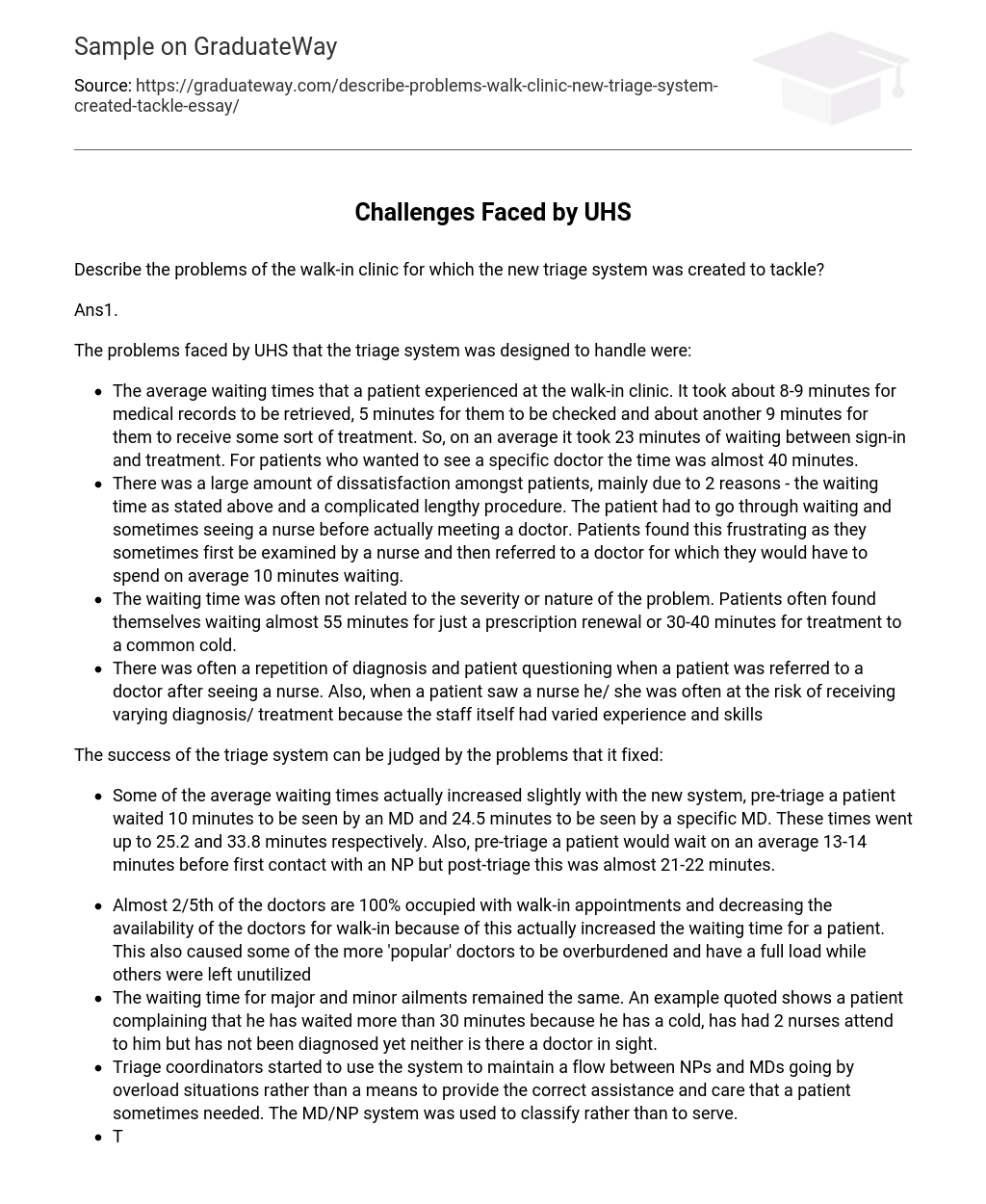The problems faced by UHS that the triage system was designed to handle were:
- The average waiting times that a patient experienced at the walk-in clinic. It took about 8-9 minutes for medical records to be retrieved, 5 minutes for them to be checked and about another 9 minutes for them to receive some sort of treatment. So, on an average it took 23 minutes of waiting between sign-in and treatment. For patients who wanted to see a specific doctor the time was almost 40 minutes.
- There was a large amount of dissatisfaction amongst patients, mainly due to 2 reasons – the waiting time as stated above and a complicated lengthy procedure. The patient had to go through waiting and sometimes seeing a nurse before actually meeting a doctor. Patients found this frustrating as they sometimes first be examined by a nurse and then referred to a doctor for which they would have to spend on average 10 minutes waiting.
- The waiting time was often not related to the severity or nature of the problem. Patients often found themselves waiting almost 55 minutes for just a prescription renewal or 30-40 minutes for treatment to a common cold.
- There was often a repetition of diagnosis and patient questioning when a patient was referred to a doctor after seeing a nurse. Also, when a patient saw a nurse he/ she was often at the risk of receiving varying diagnosis/ treatment because the staff itself had varied experience and skills
The success of the triage system can be judged by the problems that it fixed:
- Some of the average waiting times actually increased slightly with the new system, pre-triage a patient waited 10 minutes to be seen by an MD and 24.5 minutes to be seen by a specific MD. These times went up to 25.2 and 33.8 minutes respectively. Also, pre-triage a patient would wait on an average 13-14 minutes before first contact with an NP but post-triage this was almost 21-22 minutes.
- Almost 2/5th of the doctors are 100% occupied with walk-in appointments and decreasing the availability of the doctors for walk-in because of this actually increased the waiting time for a patient. This also caused some of the more ‘popular’ doctors to be overburdened and have a full load while others were left unutilized
- The waiting time for major and minor ailments remained the same. An example quoted shows a patient complaining that he has waited more than 30 minutes because he has a cold, has had 2 nurses attend to him but has not been diagnosed yet neither is there a doctor in sight.
- Triage coordinators started to use the system to maintain a flow between NPs and MDs going by overload situations rather than a means to provide the correct assistance and care that a patient sometimes needed. The MD/NP system was used to classify rather than to serve.
- The expectations of the patients still lay with the traditional system, where they liked the contact with a doctor and got personalized attention. Doctors too started to misuse the system and schedule time unofficially with patients. The system was meant to deliver the best possible care but was not.
- The satisfaction levels though went up due to 2 reasons – the new system seemed more organized and there was an improvement in standardized treatment. The triage system defined 13 ailments which could be treated by the NPs and this cut down on patient wait time and necessity to see a doctor.On the whole the system seemed to have improved things and increased satisfaction, but on closer examination of the issues as above we find that it was only marginally effective and even created issues of its own.





